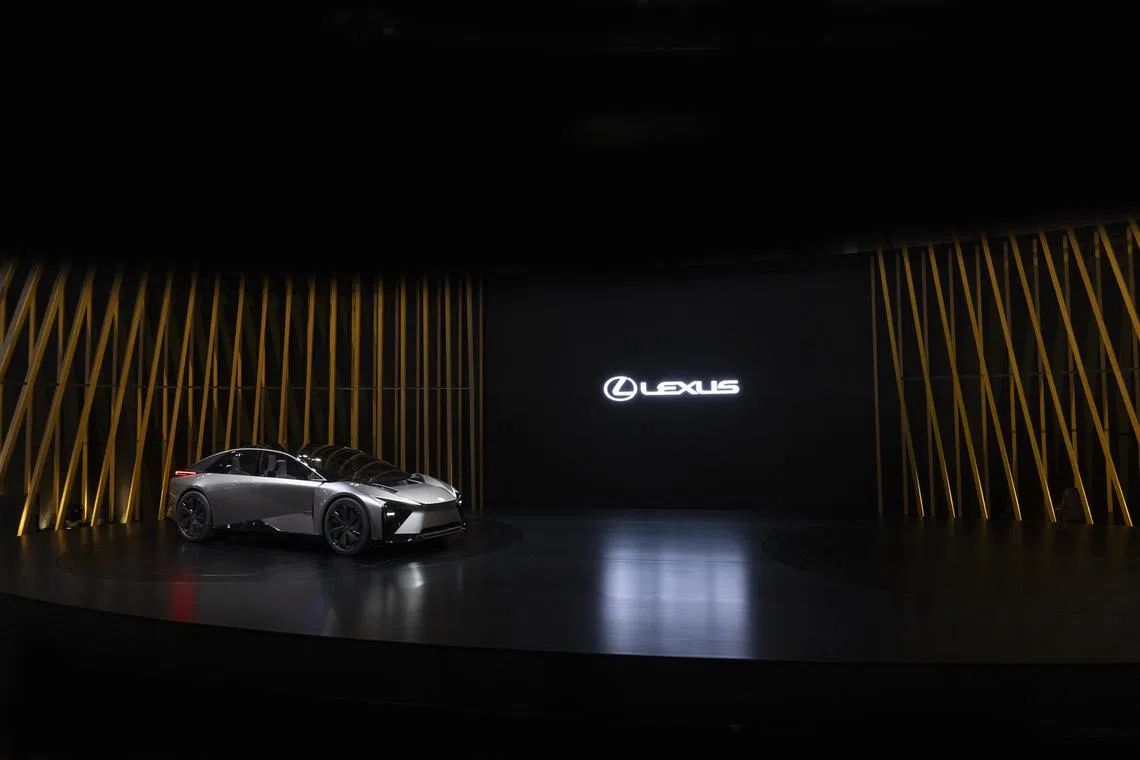Lexus LF-ZC: A nose for human desires
The electric LF-ZC zips to 100 kmh in three seconds flat and can cover 1,000 kilometres on a single charge. Those are the least impressive things about it
LIKE any right-minded petrolhead, I like to drive fast and feel heavy g-forces through my buttocks. My wife, on the other hand, wants her body as undisturbed as possible when she’s behind the wheel (although more often, she does things along backseat driver lines).
Lexus and its parent Toyota are working on a sophisticated solution to put an end to bitter arguments about what single car would make us both happy. If it succeeds, the LF-ZC and the cars that follow it from Lexus could be all things to all drivers.
The slender, teardrop-shaped concept car made its debut on Oct 25 at the first-ever Japan Mobility Show, and its makers are so confident it will change everything about electric cars that the “C” in its name stands for “Catalyst”. Lexus intends to put a production version on the road by 2026, as it leans into its role within the Toyota corporate umbrella as the arrowhead for electric car tech. By 2035, it expects to be done with combustion engines for good.
As a car, the LF-ZC hits numbers that get the juices flowing. Twin motors propel it to 100 kmh in three seconds flat. It can cover 1,000 kilometres on a single charge. The battery charges from 10 to 80 per cent in as little as 20 minutes.
It may be roughly the size of a BMW 3 Series, but the LF-ZC is as roomy inside as a larger car like Lexus’ own ES. That’s down to a new kind of solid state battery that isn’t quite ready for production yet, but is so energy dense that it’s much thinner than a battery pack using current technology would be.
That gives designers the chance to make extra low-slung battery electric vehicles (BEVs). Koichi Suga, the general manager of Lexus Design, told me that the battery is so slim, being in the LF-ZC is like sitting in the LC 500, Lexus’ sexy sports coupe.
A NEWSLETTER FOR YOU

Friday, 2 pm
Lifestyle
Our picks of the latest dining, travel and leisure options to treat yourself.
Engineers are working on shrinking other components, such as the motors and the air-con unit, to capitalise on the smaller battery pack and leave more space in the cabin.

“We need to make the main components much smaller and lighter, and deploy our strengths as a carmaker to put them together in the best package possible. Achieving this means that the design, the driving feel, and everything else can be transformed,” Koji Sato, Toyota Motors’ chief executive, said when launching a slew of new cars as diverse as an electric version of Toyota’s hulking Land Cruiser to a slender two-seat coupe called the FT-Se.
Solid state batteries will save space and weight, but the real breakthrough is a new software platform that Toyota calls “AreneOS”, which will give the LF-ZC something that almost sounds like a personality.
“The car is literally a moving sensor. It can see, it can touch, it hears,” said Simon Humphries, the chief branding officer for Lexus, moments after unveiling the car to global media. “It can even smell.” This might turn out to be the first car in the world to actively dread driving me to my favourite curry place.
Using artificial intelligence (AI) to tune a BEV’s hardware will open up “endless opportunities” for cars like LF-ZC, Humphries said.
I asked Yukihiro Yukita, the general manager of the LF-LC project, how AreneOS would work for a couple who want different things from a car. “If your wife is driving, the AI recognises that, and the settings of the car will be tuned to her preferences,” he said. If I know my missus, that means frigid air-con settings, zero sound from the car’s motors, soft suspension for a pillowy ride and automatically blasting the horn at anything in her path.
On top of getting to know its driver, Yukita said, the LF-LC is able to sense changes in a person’s mood as the day progresses.
Toyota says there will also be companion apps for AreneOS that will widen its cars’ abilities beyond zipping you around. “These cars will make getting around more convenient and fun. You will be able to go shopping from an app in your car,” chief executive Sato said.
It’s clear that LF-ZC embodies what Toyota thinks a car should be from the ground up in the electric era: start with a slimmer, more energy-dense battery than everyone else and shrink the major drive components so that cars can be slender, yet roomy inside, then create software that can sense the driver’s mood and tailor the driving behaviour to suit.
Next, build an ecosystem of downloadable apps so that each car will be personalised to the driver, just as two people might have the same model of smartphone but will effectively be carrying devices unique to them. Toyota boss Sato hinted at this idea, saying: “The future is something we all create together.”
At the very least, Lexus execs are keen to stress that the battery era won’t usher in cars that all feel the same to drive. “People believe electrification means that a car is going to be a commodity, and actually the opposite is true,” Humphries told me. “This electrification and digital combination is actually going to open up the more emotional side of not just design, but also driving.”
Copyright SPH Media. All rights reserved.

